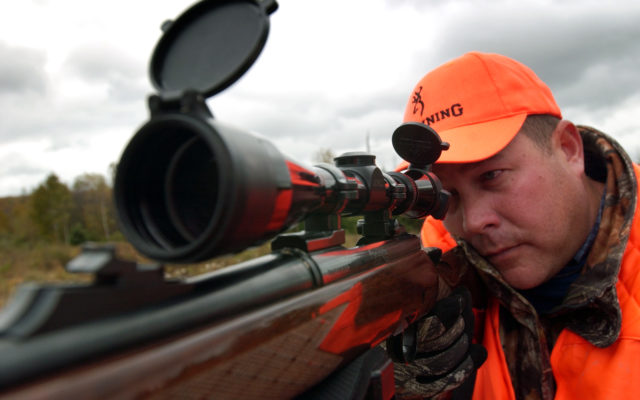
Here’s how hunters can make sure their lead bullets aren’t harming eagles
Earlier this year, the BDN told readers about a growing trend of hunters trying to cut down on the amount of lead ammunition they’re using in order to make sure their families aren’t inadvertently ingesting lead.
One problem: non-lead ammunition isn’t as readily available as many would hope.
In addition, humans aren’t the only ones who can end up ingesting that ammo after an animal is shot. Earlier this week, the Maine Department of Inland Fisheries and Wildlife passed along some tips to help make sure that scavenging birds, including bald eagles, don’t end up ingesting that lead, which can prove fatal.
“In response to COVID-19, an increase in demand for gun and ammunition has resulted in more limited availability of ammunition,” the DIF&W said in a statement. “Though many of these purchases might be for handguns, Maine has undoubtedly seen an increase in new and returning hunters taking to our woods to harvest their own food and reconnect to nature. While the Maine Department of Inland Fisheries and Wildlife is encouraging hunters to switch to non-lead ammunition, this may be a more challenging year for hunters to do so given limited supplies.”
The DIF&W said avian scavengers are more sensitive to lead exposure than mammals are, and pointed out that a lead fragment the size of a grain of rice can kill birds like bald eagles.
The department offered the following tips for handling and disposal of hunter-killed animal carcasses, with a goal of making it harder for avian scavengers to consume any lead.
— Low Effort: Leave your gut pile and carcass under conifers to hide from avian scavengers. Conifers are evergreen trees, providing ground cover year-round and may be able to visually hide the disposed carcass from aerial views.
— Moderate effort: If you’re on your own property or have permission from the landowner, you can dig a shallow hole under conifers and bury your gut pile and carcass to prevent access from avian predators.
— Most effort: You may choose to carry the remains of your gut pile and carcass out with you, leaving nothing behind for scavengers to find. If you choose this option, you can use a trash bag and dispose of the carcass in a certified landfill.